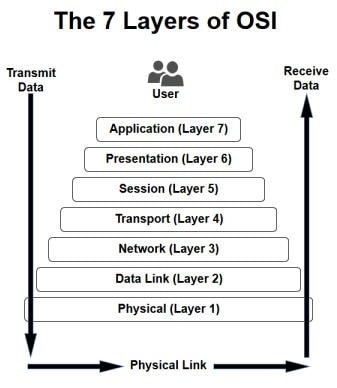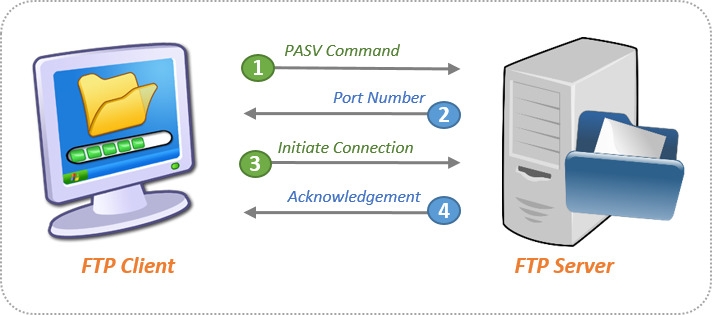 In the realm of computer networking, the layered approach was developed to accommodate technology’s ever-changing landscape. The Open Systems Interconnection (OSI) model, in particular, introduced a seven-layer architecture where each layer is responsible for a unique network function. The layers interact sequentially, passing information up and down, transforming data into a usable format. At the pinnacle of this structure is the Application Layer.
In the realm of computer networking, the layered approach was developed to accommodate technology’s ever-changing landscape. The Open Systems Interconnection (OSI) model, in particular, introduced a seven-layer architecture where each layer is responsible for a unique network function. The layers interact sequentially, passing information up and down, transforming data into a usable format. At the pinnacle of this structure is the Application Layer.
What is the Application Layer?
The Application Layer is the seventh layer of the OSI model. It is responsible for providing services directly to the application process, interacting with both the application and the user, essentially serving as the interface between the two.
So what does this layer do? Let’s explore the functions of the Application Layer.
Application Layer Functions
- Transport Access and Management: This function allows a user to access, retrieve, and manage files on a remote computer.
- Mail Services: The Application Layer provides the basis for email forwarding and storage facilities.
- Virtual Terminal: Standardizing terminals has been a significant challenge. As a solution, the OSI model defines a virtual terminal, an abstract data structure that represents the actual terminal’s state.
- Other Functions: Other services include directory services, remote job entry, graphics, information communication, and so on.
The Application Layer, with its range of functionalities, helps streamline operations in many standard protocols. Let’s consider some examples.
Application Layer Examples
- DNS (Domain Name System): DNS is a decentralized naming system for computers, services, or other resources connected to the Internet or a private network. It associates various information with domain names assigned to each participating entity.
- HTTP (Hypertext Transfer Protocol): HTTP is an application protocol for distributed, collaborative, and hypermedia information systems. HTTP is the foundation of data communication for the World Wide Web.
- FTP (File Transfer Protocol): FTP allows users to transfer files between systems on a network.
In all these examples, the protocols defined by the Application Layer enable smooth communication between applications. These protocols also outline the processes, message types, message syntax, meanings of informational fields, and more.
But how does the Application Layer tie into the real-world solutions that businesses rely on today? This is where Router-switch.com comes into play.
The Role of the Application Layer in Solutions Offered by Router-switch.com
At Router-switch.com, we understand the intricate workings of network models and the critical role that the Application Layer plays in ensuring seamless operations. Whether it’s implementing protocols like DNS, HTTP, or FTP, we ensure that our solutions utilize the best practices in the industry.
Consider, for example, our range of high-performance routers. These devices interact with the Application Layer to facilitate superior data communication across your enterprise network. By utilizing the protocols managed at this layer, our solutions help manage your files, control your email services, and support various other functions critical to your day-to-day operations.
Our routers also provide robust security measures, ensuring that your data remains protected while transiting through the layers of the OSI model. By choosing Router-switch.com, you’re not only investing in a product—you’re investing in a promise of quality, security, and exceptional performance.
At Router-switch.com, we are not just about selling products—we believe in offering comprehensive network solutions that address your needs. We invite you to explore our site and our range of networking solutions, where quality and performance take center stage.
Final Words
The Application Layer, though often overlooked, is a pivotal component of the OSI model. Its functions range from managing transport access to providing mail services, and more. By understanding this layer and its capabilities, businesses can better appreciate and utilize the network solutions that hinge on it.
At Router-switch.com, we’re here to help you make the most out of your network investments. Visit us today and let’s work together to create a network that works for you.
Read More:
Powering Cloud-Enabled Enterprise Networks with the Juniper SRX300-SYS-JB Gateway
Optimizing Network Speed: A Comprehensive Guide for Businesses
Router-switch.com: Strengthening ICT Ties Between India and Nigeria for Enhanced Digital Economy
How Global Tech Partnerships with Huawei Drive the Growth of Qatar’s ICT Sector
Driving High-Speed Connectivity with Cisco Nexus N9K-C93180YC-FX
Exploring the 4 Common Types of Wireless Networks: Empowering Modern Connectivity
Igniting the Future of ICT: An Invitation to Router-switch.com’s InnovateTech Speaker Program

